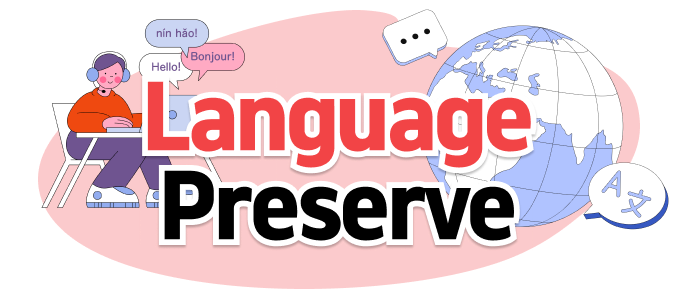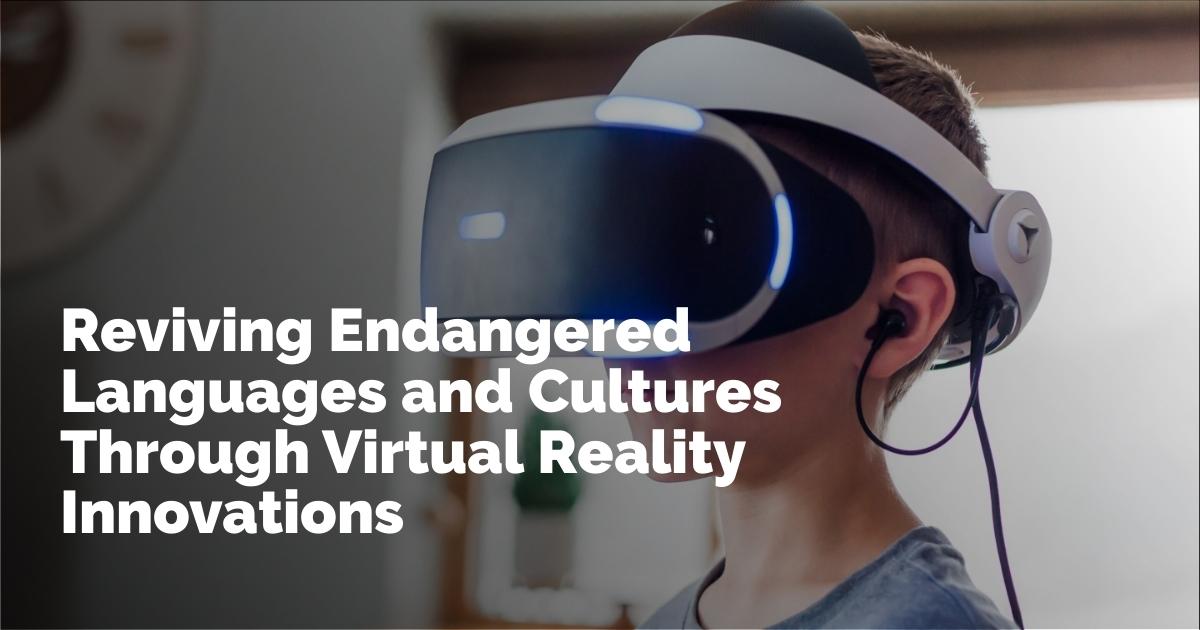The Urgency of Reviving Endangered Languages
Every two weeks, a language may disappear forever. According to the United Nations, half of the 7,000 currently spoken languages around the globe could become extinct or severely endangered by the end of this century. This potential loss signifies far more than just the disappearance of communication modes; it represents the fading of cultural richness and diversity. As linguist Noam Chomsky suggests, languages encapsulate more than mere words. They signify culture, tradition, and the identity and history of a community.
Virtual Reality: A New Approach to Cultural Preservation
In an effort to combat the loss of indigenous languages and cultures, researchers from the StoryLab research institute at Anglia Ruskin University, in partnership with the creative company NowHere Media, are utilizing virtual reality (VR) technology and storytelling. They hope to use these immersive methods to rejuvenate endangered languages and preserve cultural heritages.
Research conducted as part of this collaboration demonstrates that immersive storytelling, especially when developed in tandem with local communities, can forge strong group identities and promote the protection and continuation of cultural heritages.
Kusunda VR: Bridging Worlds
A significant project developed by NowHere Media is Kusunda VR, an interactive film that engages audiences in learning key terms of the Kusunda language, a tongue in peril of vanishing in Nepal. This film offers a glimpse into the nomadic lifestyle of the Kusunda people and features interviews with some of the language's last surviving speakers.
The creators worked intimately with Kusunda shaman Lil Bahadur and his granddaughter, Hima, to capture the essence of Kusunda life and language. Employing cutting-edge techniques such as volumetric filming and photogrammetry, they recreated a three-dimensional environment playable through VR technology. It also features voice interactivity, sparking interest in learning the Kusunda language.
Lil Bahadur almost relinquished his native language after relocating to the city and leaving behind his hunter-gatherer way of life at eighteen. Fortunately, his granddaughter Hima is fervently committed to preserving her grandfather's language and cultural legacy. She has been learning Kusunda from Gyani Maiya Sen-Kusunda, a community elder and ardent advocate for language preservation, who participated in Kusunda VR before her passing at the age of 83.
The Impact of Immersive Technology
The potential of immersive technology in sustaining endangered languages is being tested through a project called Reviving Kusunda, funded by a grant from the British Academy. This study juxtaposed the Kusunda VR experience against a short film produced within the project scope, seeking to explore the impact of immersive technology in cultivating emotional responses and understanding compared to traditional film.
Over the past century, audio-visual mediums like film have been critical in documenting and preserving cultural elements such as narratives and traditional art. Despite their historical importance, researchers are shifting focus to newer technologies like virtual and augmented reality, intrigued by how these platforms compare.
Audience Reactions and Preferences
Feedback from participants—gathered both from the Kusunda community and the British public—unveiled numerous advantages to varied media formats. However, sentiments strongly favored VR, highlighting the value of interactivity and full participation as crucial for engaging audiences deeply. As part of the VR experience, participants become embedded in the narrative, which helps resuscitate values and stories from the past.
Participants reported feeling involved in the Kusunda narrative, experiencing it not as observers but as participants. This ability to “feel” connected to the Kusunda people offers promising possibilities for deploying VR in safeguarding endangered languages and heritages.
Expanding Horizons: Projects Revive and Beyond
The encouraging results of the Reviving Kusunda initiative have propelled StoryLab to lead a European project known as Revive, supported by €3 million under the Horizon Europe program. This project is tailored to preserving two endangered European languages: Griko in southern Italy and Cornish in Cornwall, England.
This initiative involves an international consortium intertwining academic research with industry expertise to employ immersive methods, data visualization, archival exploration, and co-creation. The ultimate goal is to infuse regional museums and visitor centers with these technologies to elevate cultural awareness and integrate them into formal educational systems for future generations.
Virtual Reality: Making the Intangible Tangible
Across the board, participants from the Reviving Kusunda project recognized VR's exceptional ability to animate heritage, converting abstract cultural facets into tangible experiences. As a Kusunda community member shared, VR allowed them to relive the stories their grandmother shared, bringing those narratives into vivid reality before their eyes.
The use of virtual reality in reviving endangered languages and cultures offers a transformative path forward. These technologies do not merely preserve languages; they bring them to life, ensuring that cultural legacies resonate with and engage future generations.
출처 : Original Source

